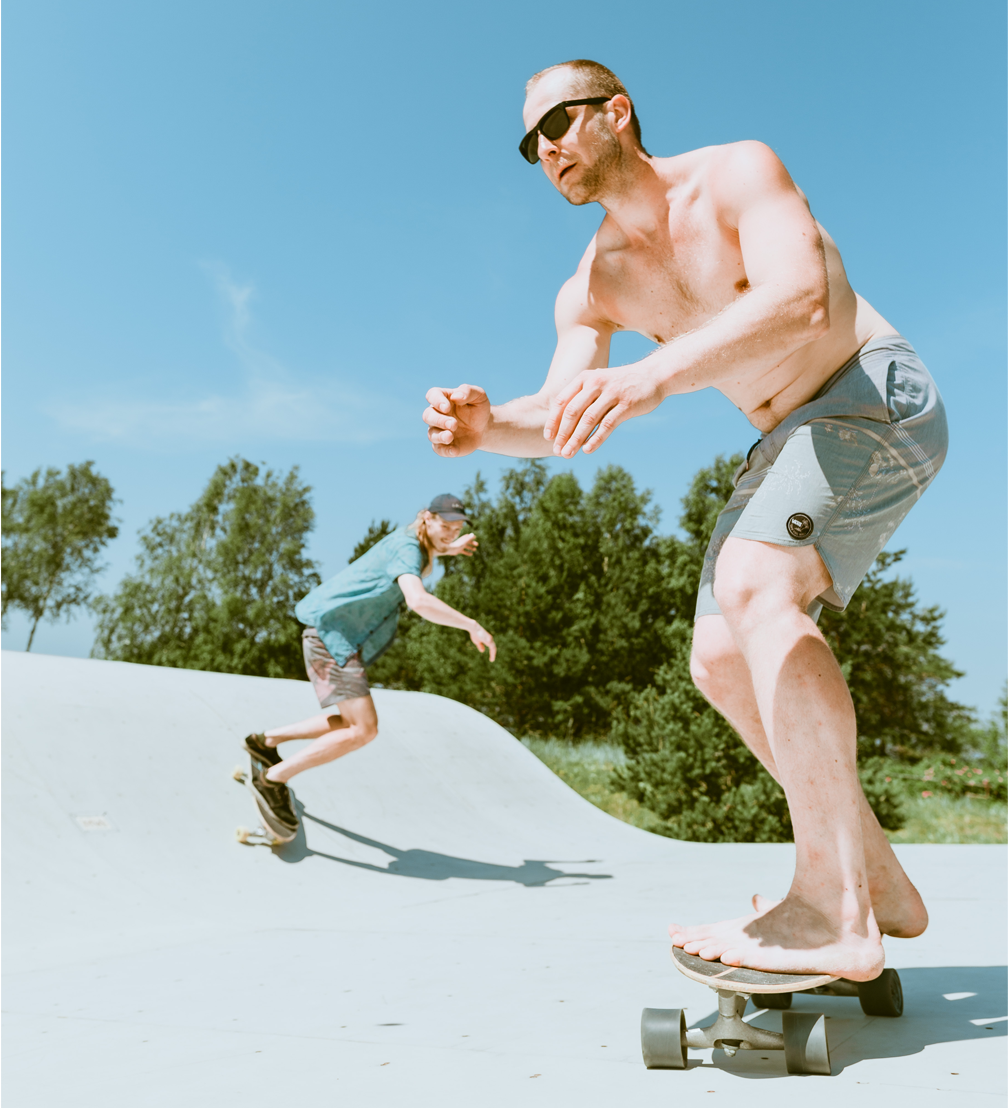
Mind Work Ramps is the leading skatepark construction company in the Baltic States, which has already implemented hundreds of alternative sports infrastructure projects worldwide. The leaders of Mind Work Ramps, Jānis Kundziņš, Mārtiņš Sleja, Dāvis Nesenbergs, and Toms Siliņš are living the lifestyle of skate and BMX culture, and that can be felt in each of their projects.
What were the beginnings of Mind Work Ramps?
Mārtiņš Sleja:
Some thirteen years ago, with my colleague, Jānis Kundziņš, we realised we have to start building skateparks because we skated and rode BMX ourselves, and the infrastructure was severely lacking. We didn’t start doing this to make a business, but rather out of necessity. A skater’s thinking always came before a businessman’s thinking — the point was to get a good product.
Dāvis Nesenbergs:
At first, we were cutting ramp constructions with a jigsaw in a garage. But now we have completed more than 200 projects in the Baltics, as well as parks in Europe, Kuwait, Malaysia, China, and Singapore. We’ll build in Australia at the end of this year and in New Zealand next year.
When you started, the skatepark market hardly existed in Latvia.
Dāvis:
The market was very small. Latvijas Finieris had one product and, of course, importers of children’s playgrounds had ready–made modules to offer.
Mārtiņš:
The available products were, from a purely functional point of view, not suitable for us as users. A good skatepark is an architectural form, not a ready–made solution that has been put somewhere. We already know that what works for everything doesn’t work for anything. This is still our main drive — to design something special for a particular place. Even when we work within a strict budget, we always analyse the location and adapt to it. To view skateparks as architecture, you must understand both functionality, location, and the user.
At Mind Work Ramps you do everything yourselves — from the idea and design to construction and testing. How does this practice affect the product you create?
Mārtiņš:
In this industry, companies that design as well as build are fairly common. What makes us unique is the fact that we use our own products and are part of the skate community. We can ask local skaters what they need, rather than build a skatepark in a place where there are only BMX riders. Furthermore, in this community, news of recent infrastructure still spread by word of mouth. It is impossible to build something mediocre and make up for it with marketing because users will know the true quality of the product.
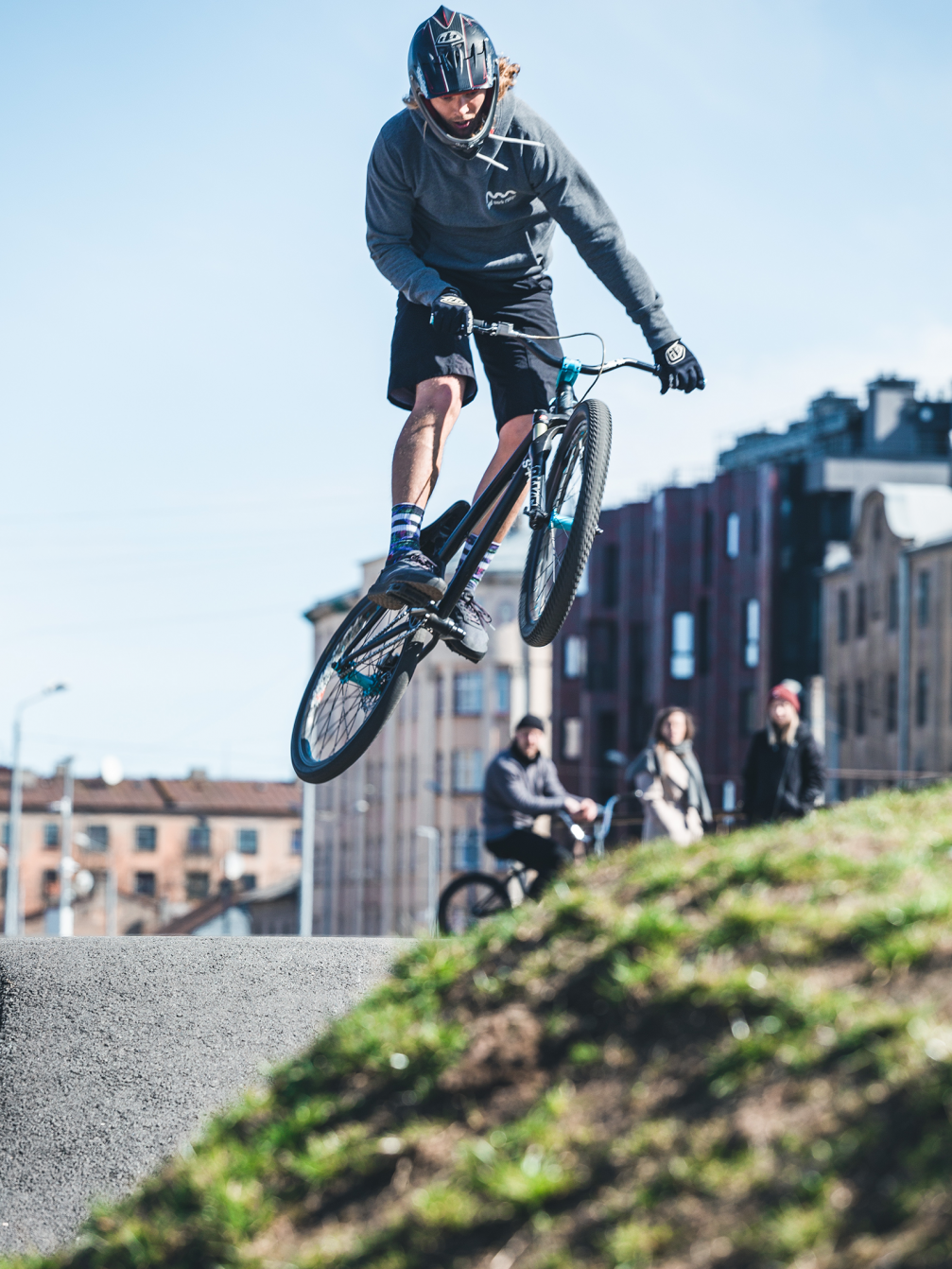
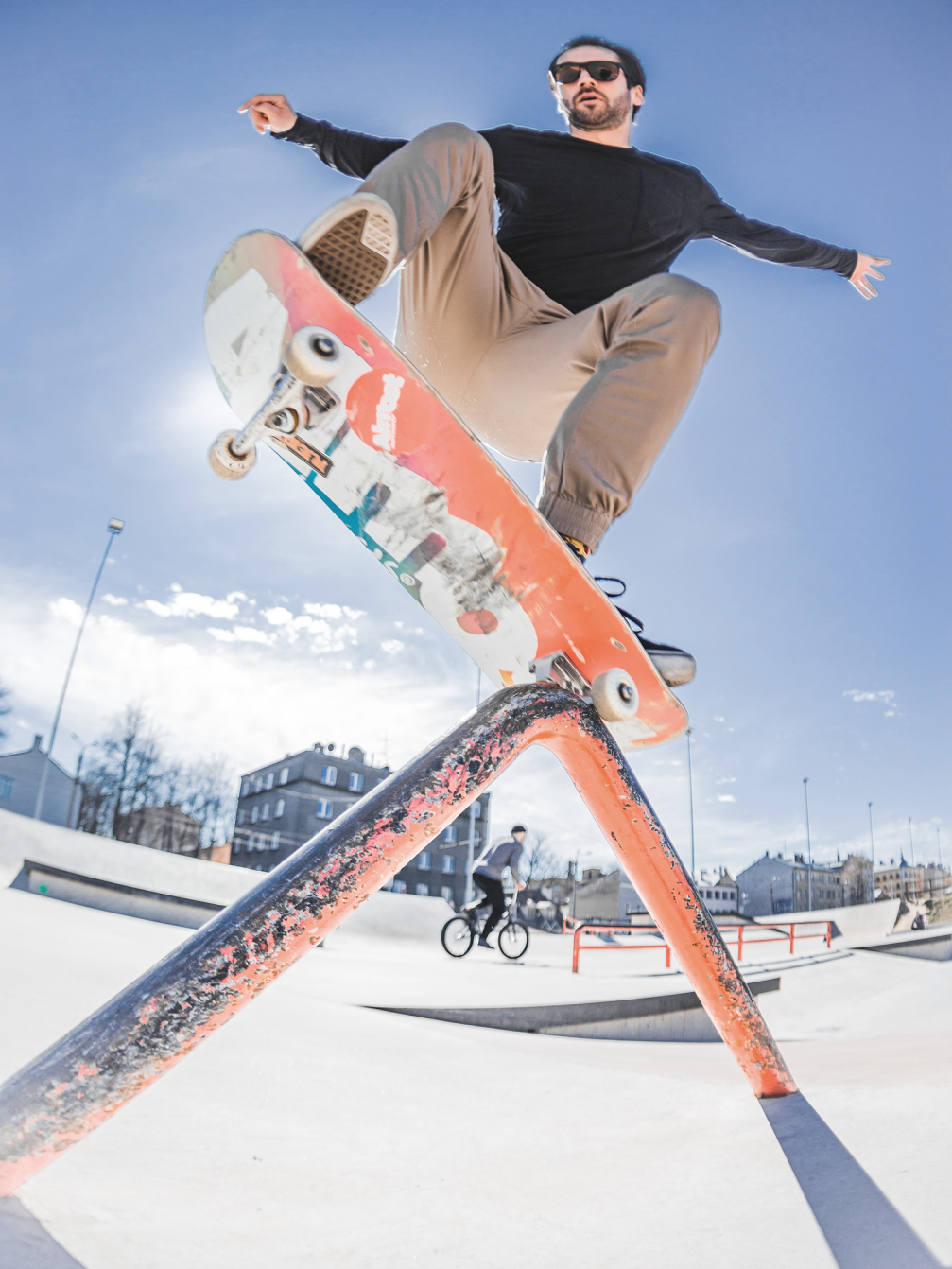
What role does functionality play in creating skateparks?
Toms Siliņš:
Of course, technical accuracy is particularly important when designing for high sports achievements, but a simple recreational park in the city also needs to be functional. We are often criticised for catering to a niche user, while it is more important for children to have somewhere to spend their time. But continuing this analogy, you can make a proper swing set for kids, or you can make one where the strings are too low, you can’t really swing, and after a week you’ve got a pit strewn out with your butt.
Dāvis:
You can also make a swing set that you can tie your hands and legs to.
Toms:
Yes, many think we’re only building these extreme 360 swing sets and don’t see the need for them, but they’re actually just very good swing sets. We see many illogical solutions that are not based on user experience. And in the countryside, children will ride in bad skateparks because they have very little choice. But it is possible and necessary to do better.
Mārtiņš:
And to make them more lasting. Of course, granite is very expensive, but with all the intense use it will stand there for a long time. If an urban object can withstand skaters, it can withstand a lot. Maybe the aesthetic of white concrete will suffer when skaters come and skate it all black, but it’s good to feel the place is being used. That it’s alive, that young people have spent thousands of hours here.
For a skatepark, high quality and functionality are just as necessary as for other forms of public outdoor objects. But what is the importance of aesthetics?
Mārtiņš:
We deliberately go for not just functional but also aesthetic solutions. It’s part of our ambition to integrate this sport into the urban environment. Aesthetics also define the sport itself. It’s not how many turns you can do that is appreciated, it’s what the trick looks like, can you ride smoothly, evenly, effortlessly. Skating, inline and BMX — all of these activities are performative. The aesthetic side — photography, videography, music, various artistic expressions — is the most creative part of this culture. It’s important for us that young people catch on to this vibe. Furthermore, in our view, a skatepark is primarily not sports infrastructure, but architecture, a part of the city and its environment. A skatepark is not a sports field for extremists that you have to put a fence around. It’s a part of the city where a slightly more alternative–minded side of society can do their thing.
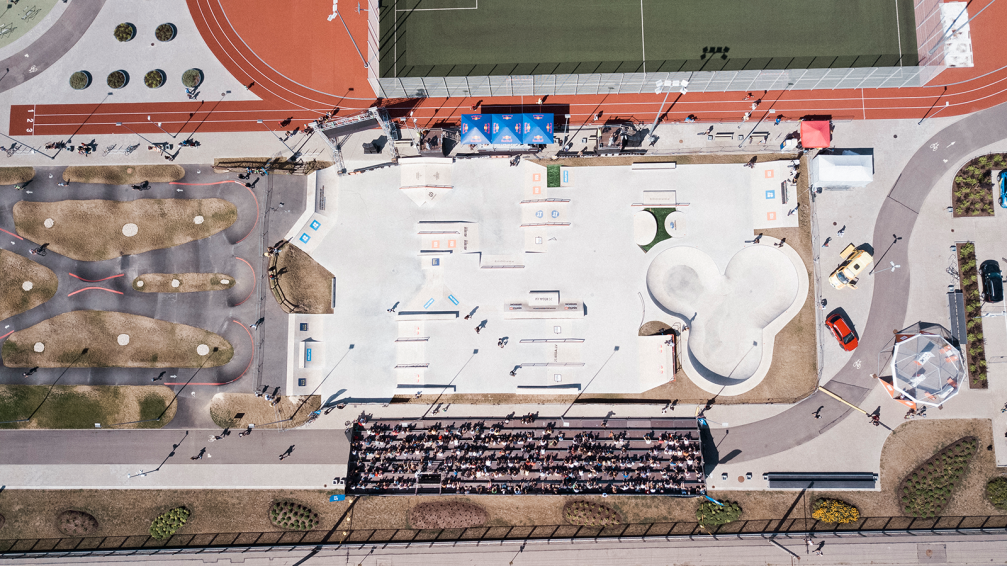
What is the audience for a skatepark?
Mārtiņš:
Our audience is not just skaters, inliners, and BMXers, but young people in general. We design not only for those who ride in the skatepark, but also for those who’ve come to watch, film, or meet with friends. Young people are that critical demographic group that doesn’t really have a place in the city. Younger ones have kids playgrounds, teenagers are often sent to some structured classes where a coach is willing to both discipline and bill for it. But there are very few places where young people can be by themselves in a safe environment in the city. It’s paradoxical because they use the urban environment the most. Adults sit in offices and use public space as a transfer zone, children need to be looked after by someone, but young people stay outside from the moment school ends until darkness. If the city doesn’t give young people opportunities to meaningfully spend their time, they will come up with something less worthwhile. It is therefore possible to prevent and address various social problems through a skatepark. It becomes a real mission as we become parents ourselves.
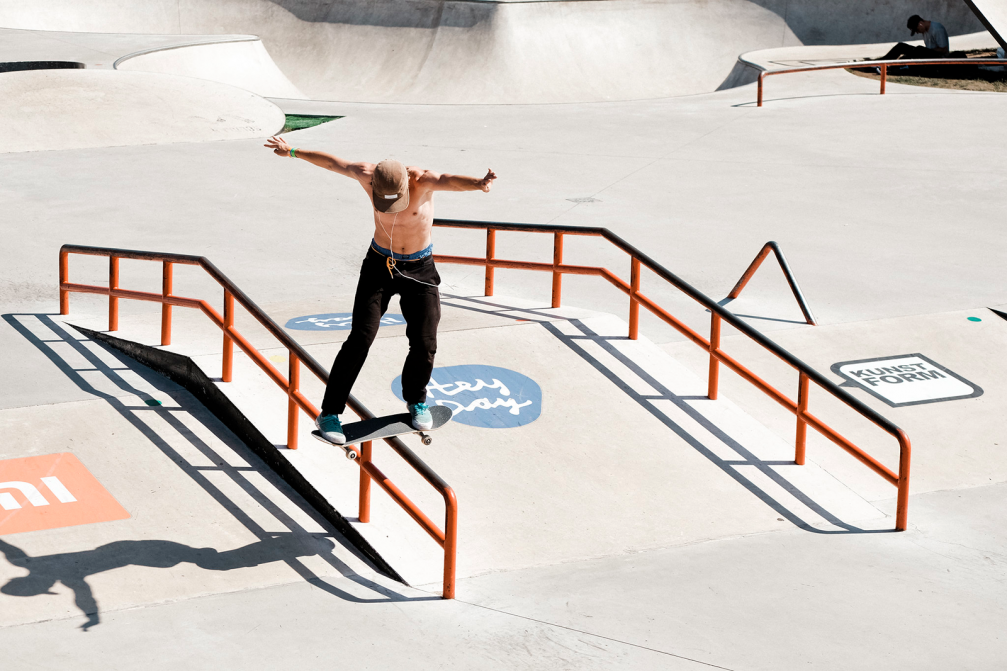
What is the impact a skatepark has on the city and its immediate surroundings?
Dāvis:
It used to be common practice to build them on the outskirts, in some problematic area. A skatepark improves infrastructure and brings order to the area. Miera Garden is a good example — in 2015, the park was abandoned and only all sorts of questionable types hung around. With a skatepark, that place came alive.
Mārtiņš:
Our community — skaters, inliners, BMXers — feel content outside of the comfort zone. To do their thing, they are willing to drive for 300 kilometres or climb over a fence. The social context of Miera Garden didn’t scare them, and with their activity they incentivised others to act, too. Now this park is completely civilised.
Toms:
A skatepark can change the whole environment, raise the value of real estate. It is one of the tools and ways of urban planning to address problematic areas.
Mārtiņš:
Such experiments have been going on in the USA since the eighties and nineties. Many developers in demoralized neighbourhoods promote alternative sports and allow these social groups to operate there by themselves, which in turn attracts others. Similarly, the experiment in Miera Garden proved that a skatepark can contribute to the revitalisation of a particular neighbourhood.
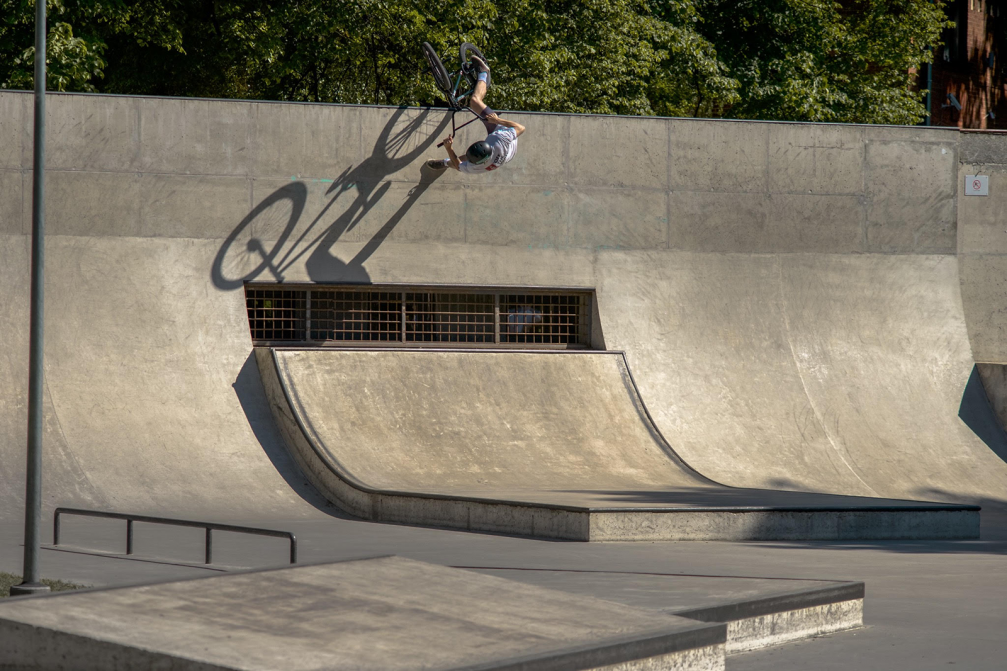
Is the community of alternative sports a gentrifier just like the hipsters in Grīziņkalns?
Mārtiņš:
Not quite. Hipsters flock to a place with the goal of living there, taking over, and tidying up the environment around them. Skaters don’t care what the district is like, they have but one mission — to make and film a cool trick in a good spot, whether there is a skatepark or not. Rather than trying to transform and beautify this environment somehow, they’re using it as is, activating it with their presence, making it come alive. Especially with today’s rapid exchange of information. If someone films their trick and puts it on social media, the next bunch will be there in a week, 50 skaters will be there in two weeks, and guys from Jēkabpils will have come within a month.
Dāvis:
If it’s a particularly good spot like the National Library, skaters will come from as far as the USA. There’s talk that the library director saw the first skaters there even before construction ended, when the area was still fenced in. While the guards were trying to disperse the skaters who had sneaked in, the library realised it was a good idea to let them be there and created the campaign My Library — My Spot. Although the library’s amenities were broken as a result of this campaign, because it was not designed for the purpose, it is now adapted for skating, and the library square is not just an empty granite patch. It’s a good idea to incorporate not only skateparks, but skate–friendly architecture in the city as well.
Toms:
In most cases a skatepark imitates the urban environment — it’s like a friendlier, more resilient replica. Even the high–radius structures that have been popular lately are references to the pools from the sixties that skaters in the USA took over.
Mārtiņš:
Alternative sports were born on the streets, not in an athletics stadium, and ideologically they should stay on the streets.
Toms:
As generations change, these activities have become more domesticated and have gone all the way to Olympic sports. Values that matter to riders also change. If freedom, unrestraint and a sort of rebellion matter to us, then for younger generations it is no longer that important. But we have a duty to preserve tradition and pass on these values and the skateboard culture.
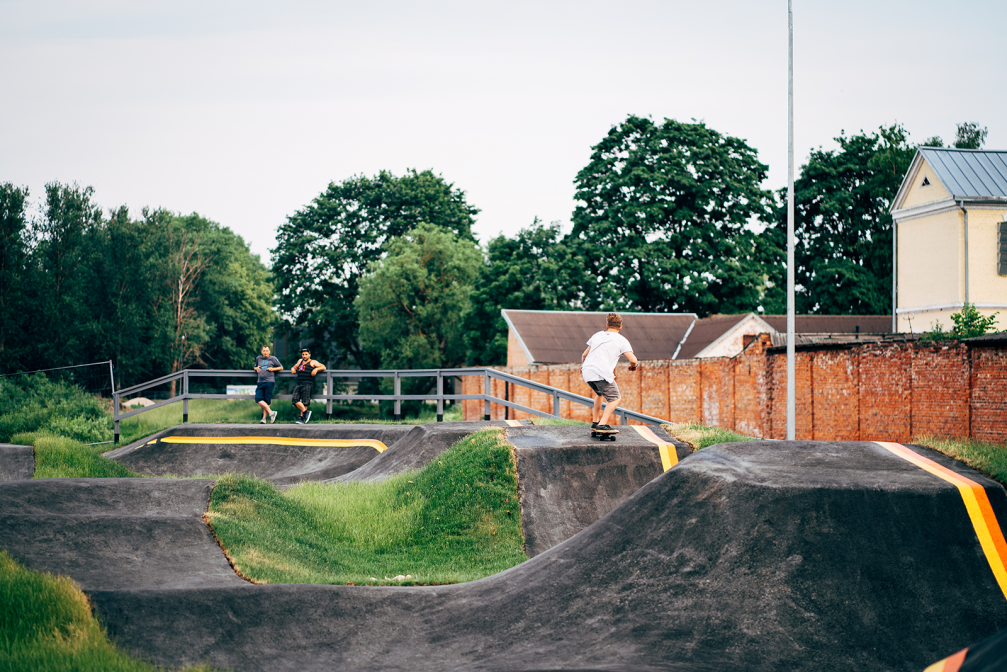
You’ve been in this culture and industry for almost 20 years. What is your relationship with alternative sports now?
Mārtiņš:
We’re all still riding. At the same time, we’ve gone through a certain cycle. For those looking to realise their athletic ambitions and achieve outstanding results, a skatepark is a great platform for a training program. But all I want to do now is to go to the Museum of Art and just grind the ledge.
Toms:
We came into this subculture as teenagers, and at that age it opened up a whole new world, an opportunity to build identity and friendships. As they invest more time and grow their skills, riders increasingly expect something back — if not career advancement as a professional athlete, at least recognition from others. Of course, for the most part, this doesn’t happen, because maybe one in a hundred finds their place in that niche as a professional. The only way to go through this disappointment is to love the process, not the result. When you stop waiting for something back, you get the urge to do something for others, too. In our case, it’s the construction of skateparks. We’re creating space for others to get to know this sport and lifestyle.
Mārtiņš:
This company is also a very good platform for skaters who won’t achieve their professional sports goals, yet want to give something back to the industry, want to stay in skate culture. So we’re giving them work, teaching them how to pour concrete and building this industry together, and they can maintain their skater’s identity. Just like us — even though we’ve grown up and we view this industry as a development of the city and its infrastructure, at the same time, we are still the same skaters and BMXers who just want to do their thing. Without that drive, Mind Work Ramps wouldn’t exist.
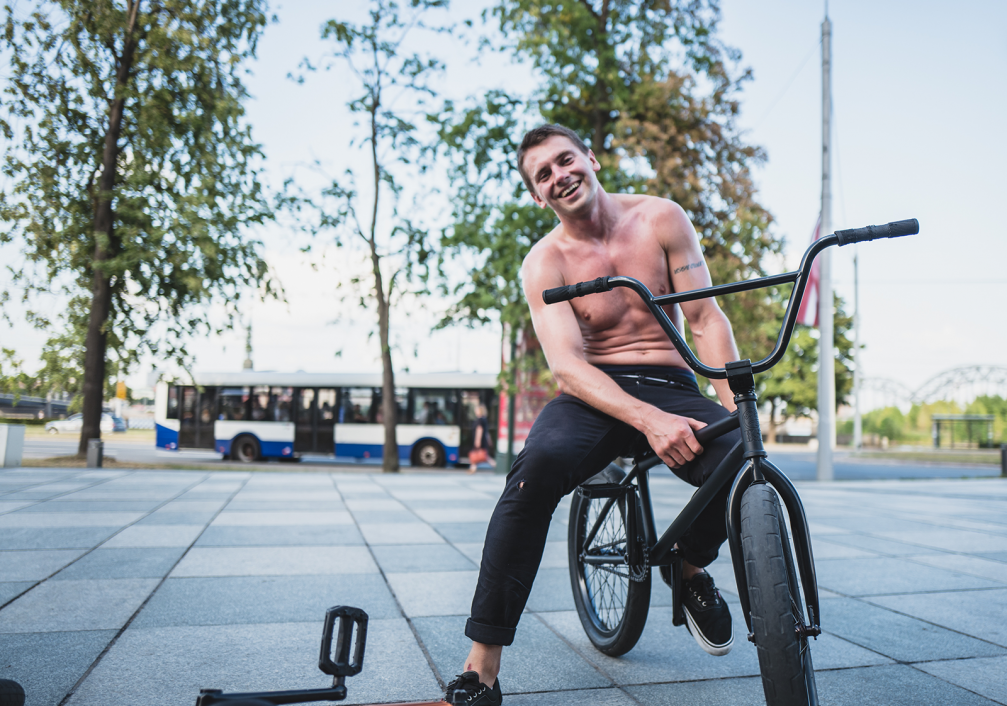
How do the products you create affect your company’s management style?
Toms:
For commissioning customers and developers, we certainly don’t leave the impression of a typical builder. But when you look at the data, there’s no question about what the scale of our company is. If we started out as a marginal Eastern European company, then we have now gained worldwide recognition. We run this company the way we do alternative sports — recklessly, with great devotion, without fear of risk and learning a lot from the process. It’s both a flaw and our biggest strength at the same time.
Are you planning to expand your company in a new direction?
Mārtiņš:
We have started thinking about mountain bike tracks using the flat mountains of Latvia. Given the large number of cycling enthusiasts and MBT culture followers in Latvia, we want to try to create alternative sports opportunities for them as well — and this will also be part of the development of the city’s infrastructure.
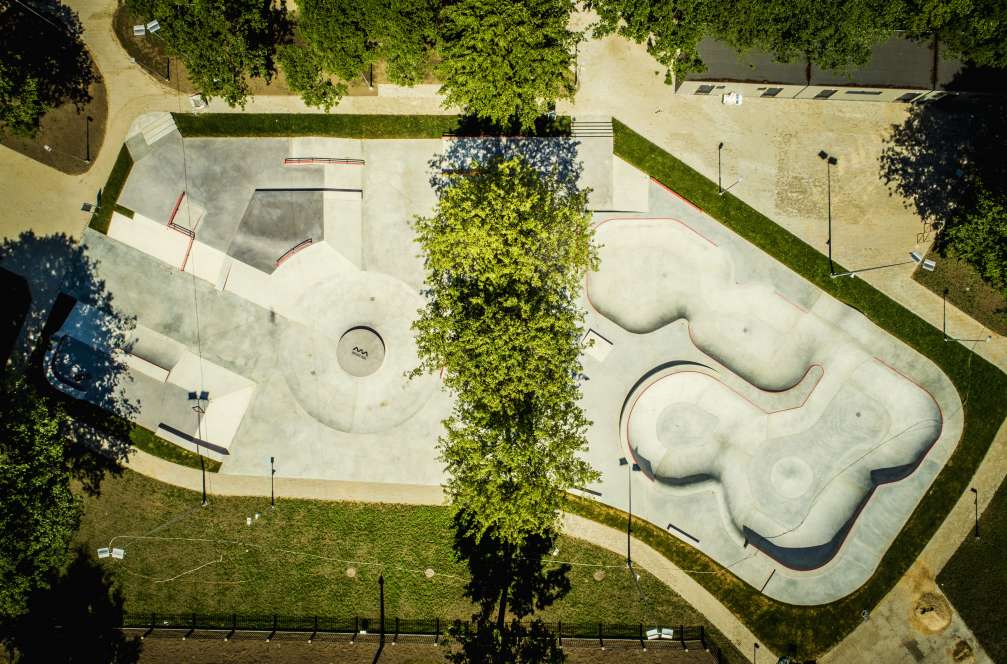
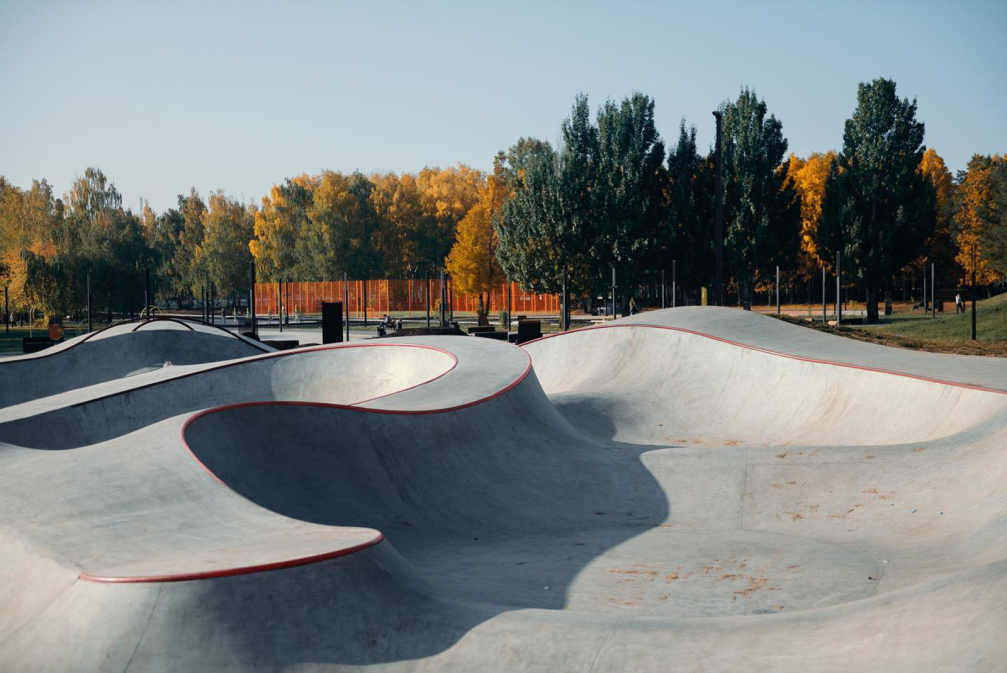
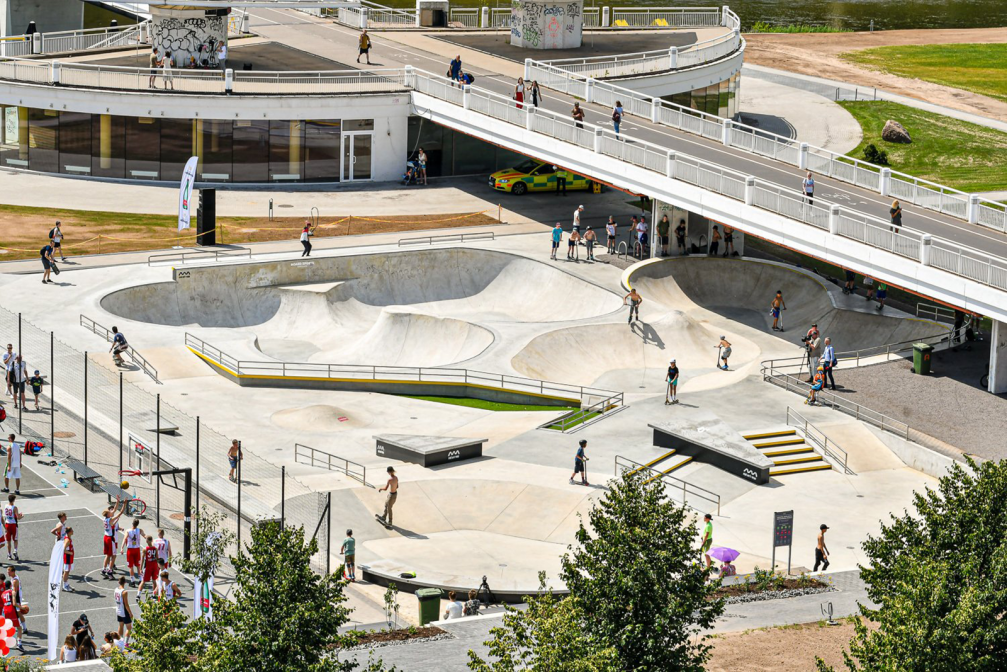

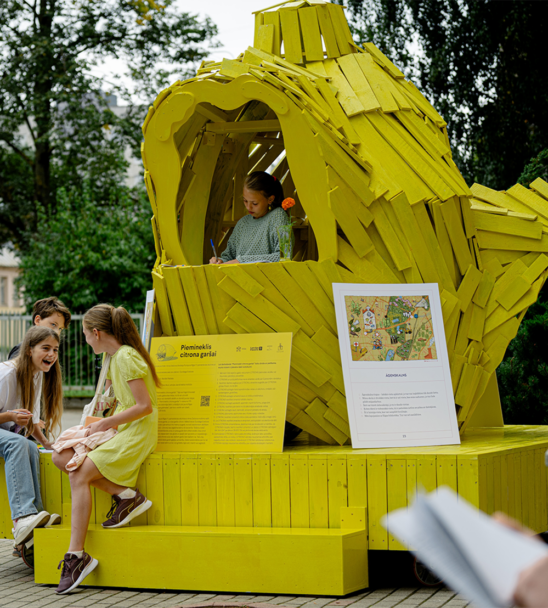
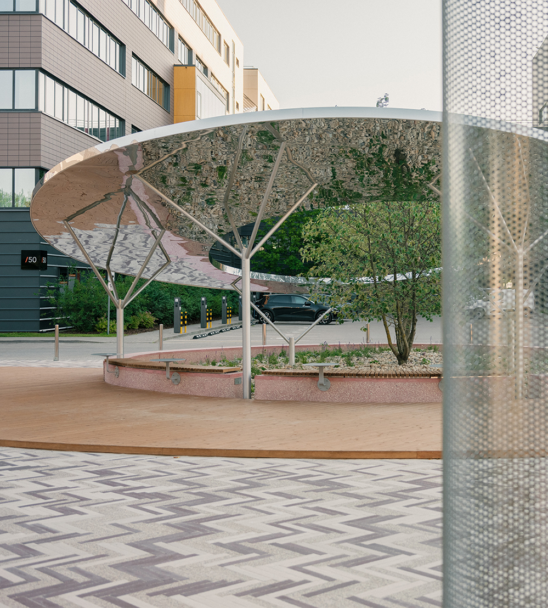
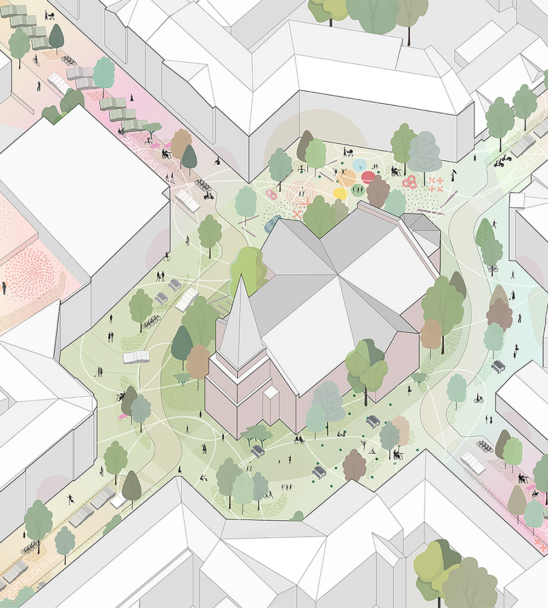
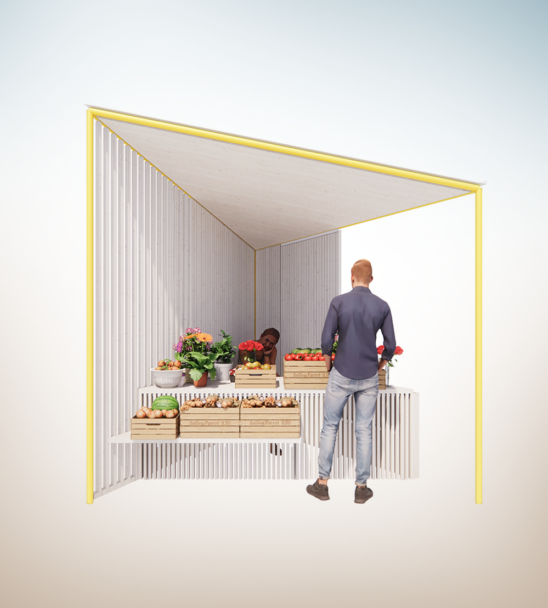
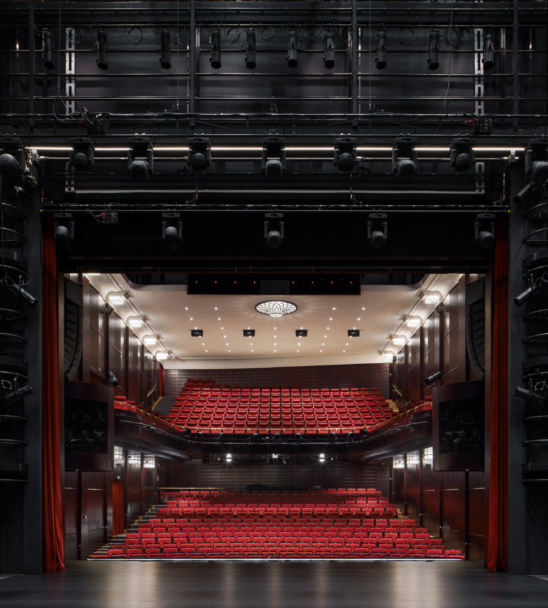
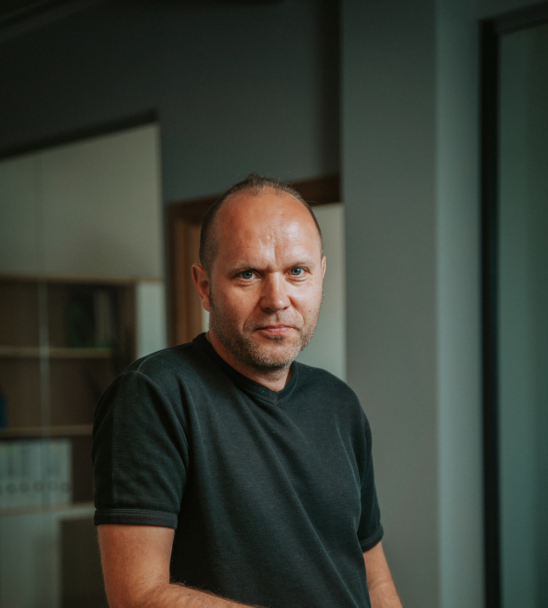
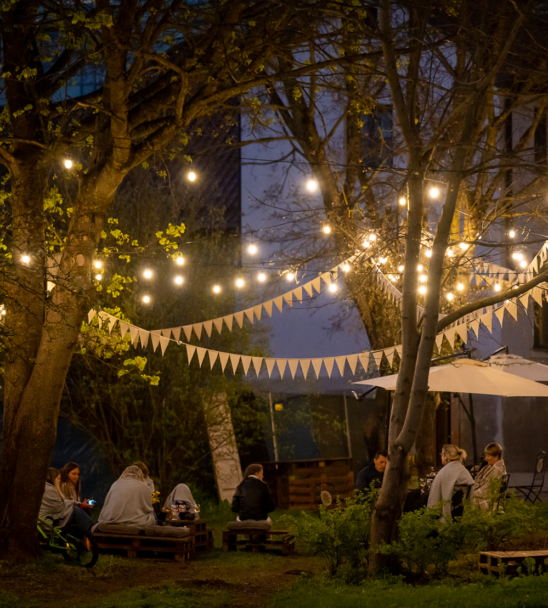
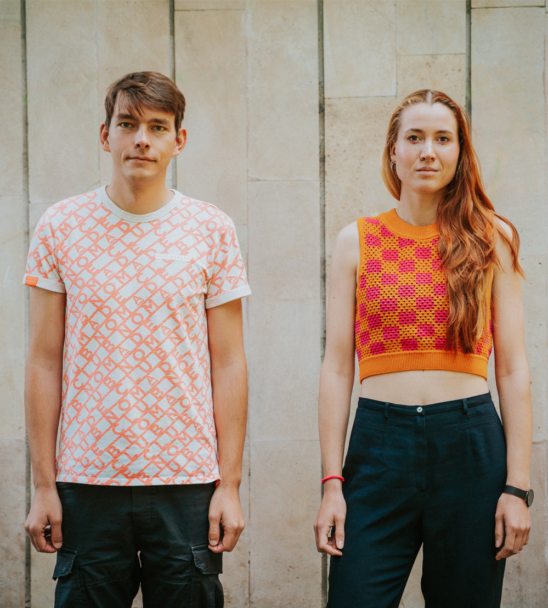
Viedokļi